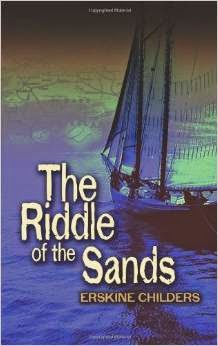 |
| Achillbeg house. |
There are places where humans once roamed and lived and worked that have been abandoned and are on their way back to natural states. As these places transition between times, walking where people long forgotten once walked can be a rather eerie experience. Voices carry on the wind, children's laughter echoes off the crumbling walls, and shadows pass over the hills playing with your mind's eye. And so it is on many of the deserted islands off the west coast of Ireland.
It's often a romantic notion we have of living on islands. Back then, when they had to produce all their own food and shelter for survival, there wasn't much romance in the air. Today,
however, things
are different.
 |
| School house on Achillbeg. |
On the Skelligs, the Blaskets, Scattery, Inishark, the Inishkeas, Achilbeg, Inishmurray, Gola and others there are many abandoned dwellings left behind when life became just too difficult and the people or the government could no longer support the remote lifestyles in an ever changing world. Some go back to abandonment in prehistoric and Viking times, other more recent. Instead of continuing to struggle and requiring ever more expensive life support services, people moved, often en masse, to the mainland where they could live their lives with access to healthcare and food stores and many other people with whom to share the burdens. But they left so much of themselves behind -- the sorrows, the sweat, and the joys. And after those were forgotten, new people followed in their wakes, once again searching for the serenity and freedom that disconnected island life affords.
 |
| Lazy beds. |
They built the fields by clearing the land and stacking the stones in even rows. Some of the more fertile fields were kept in grass to allow the animals to graze on rich green nutrients. Others were designated for crops. They created rows of lazy beds by folding the sod over and filling the space between with the sand and seaweed carried up the hills from the shore. They planted potatoes in the center of the lazy beds, which sustained them year round.
 |
| Crumbling walls. |
It was the potato that enabled the Irish to thrive. It arrived from South America in the late 1500s, enabling the population to grow from about 1 million to 8 million in the next 250 years. It is estimated that by the late 1700s each person consumed about 5 lbs of
potatoes per day; an average family of two adults
and four children needed roughly 5 tons in a year. Though this may seem like much, even a poor farmer or labourer could readily grow this amount on just half an acre. Their diet consisted mainly of potatoes and milk, with the occasional fish, rabbit or bird as supplement. Their diet would have been a bit more varied than that of their mainland contemporaries who would not have eaten fish at all. When the famine caused by the potato blight came to Ireland, the populations in the islands fared better for that reason. Also, in many cases the blight didn't cross the water and so they did not starve.
 |
| Abandoned village in the Inishkeas |
 |
| Sand dunes taking back their property |
Wandering these islands, one can imagine the men and women tending their fields as their children played in the schoolyard below, as children have for millenia. One can imagine the mothers tending the gardens and flocks on the hills and the fathers fished the sea. One can imagine the mothers looking down lovingly at the children chasing each other and smiling at the remembrance of their own long-lost but not forgotten youth. One can imagine the women looking out to sea to make certain their men were not in any danger on a blustery day. One can imagine them worrying about whether their men would make it home on the day when the unexpected storm raged tempestuously.
But life goes on. The children come home from school. The animals must be fed. The crops must be tended. Whether or not the men come home. And whether or not they come home with fish on which to feed. Then one day it all gets to be too much and someone sends for a boat to rescue those that remain.
 |
| Treasures left behind within the ruins |
And they begin life anew, go to school, get a job, and work themselves to the bone to support the families they now have themselves.
Then, as the stress of modern life takes it toll, the children's children return to the peace of the island paradise with clear aqua waters, and bright white sands butting up against striated rocks sprinkled with shiny fool's gold, containing the impossibly green fields where sheep still roam. They go there to recharge their souls and breathe deeply of the fresh air, watch the birds dive and fish for mackerel fresh from the sea. It is not survival conditions now, yet in a way it is. It is not a matter of eking out a living there but rather of saving the heart and soul. Survival nevertheless. But about thriving not about dying. What a reversal of fortunes.
They restore the old homesteads that they now own and banish the spirits of those that never rest while conversing with the spirits of those who remember better days. They return to the land to which their spirits belong. It calls to them clearly in its lamenting tone, "Come home." And home they go.
 |
| Restoration and coming back on Gola. |
 |
| Abandoned homes on Gola |
 |
| Mix of restored and abandoned homes on Achillbeg. |
 |
| Clues to days past on Achillbeg |














Comments
Post a Comment